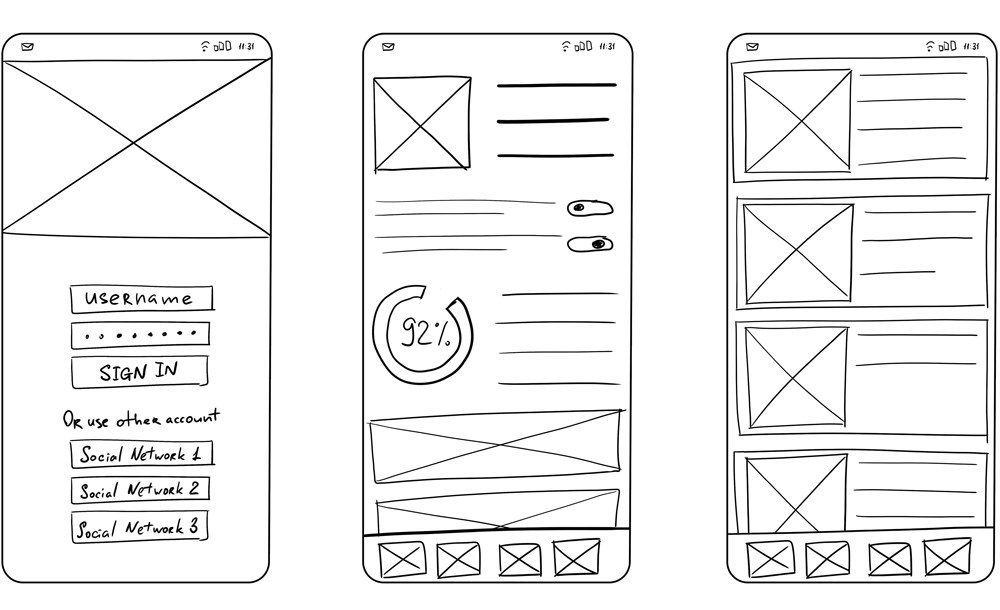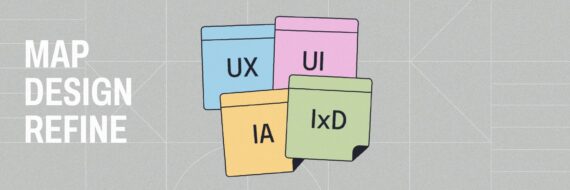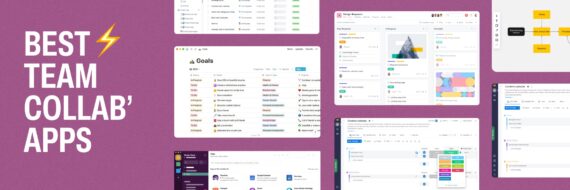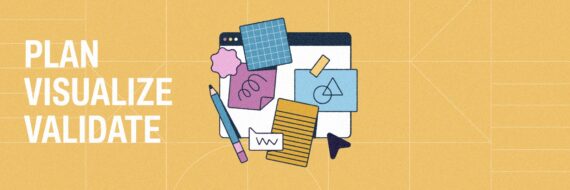User-friendly and intuitive websites and apps don’t just appear out of thin air. It’s prototyping and the solutions that come from rapid iteration and testing that guide you to a highly refined final product.
Simply put, the best prototyping tools are going to be the ones that align with your needs. So sit back, relax and check out our breakdown of the top options.
Prototyping tools comparison chart (top 10 highest rated):
| Product | Best for | Our rating | Pricing |
|---|---|---|---|
| UXPin | Overall | ⭐⭐⭐⭐⭐ | $19/mo per user |
| Sketch | iOS prototyping tool | ⭐⭐⭐ | $99/yr license |
| Mockplus | Collaboration | ⭐⭐⭐⭐⭐ | $199/yr |
| Balsamiq | Wireframing option | ⭐⭐⭐⭐ | $89 license |
| Figma | Browser-based | ⭐⭐⭐⭐⭐ | $12/mo per user |
| Adobe XD | UX/UI | ⭐⭐⭐⭐ | $9.99/mo |
| WebFlow | Websites | ⭐⭐⭐ | $12-$29/mo |
| Framer X | High fidelity prototypes | ⭐⭐⭐ | $12/mo |
| InVision ((shutting down Dec, 2024!) | Apps | ⭐⭐⭐ | $15/mo |
| Marvel | Interactive mockups | ⭐⭐⭐ | $12/mo |
What are prototyping tools & what do they do?
Artists make sketches before starting a piece, architects draw up blueprints for the entire house before cutting any wood.
What do UI/UX designers do? You prototype.
Rapid prototyping is a way of drafting your plan so you can iron out any issues and make sure everyone’s on the same page about what you’re doing before you commit anything to code.
Prototypes help you figure out what end users or customers actually want early in the design process because nobody wants to create a product that doesn’t work for the people who need it.
With the right prototyping tools for UX and UI, you can (affordably) test and try new things, collect user feedback, hone user journeys, fine tune the visuals, interactions and more en route to crafting a better overall user experience.
Prototyping is therefore an essential part of the web and mobile app development workflow, as critical as designing a sitemap, and choosing the best UI and UX prototyping software for your team makes that arduous creative journey more manageable, productive and efficient.
Are prototyping tools useful?
In a word; yes.
Prototyping tools are the means to an end in terms of designing and building an app or site that doesn’t bounce users in a flash.
In addition to what was mentioned above, web prototyping and prototyping your apps is imperative for confirming what works in your layout. It helps sharpen the navigation, aesthetics and overall site architecture.
On the flipside, building and testing prototypes also allows you to quickly fix what isn’t working or do away with it altogether to better serve your users and visitors.
Ultimately, the point of prototyping is to help you speed up the design process, save time and money and improve user experience.
If you’re a project manager, you’ll also want to look into planning tools so you can keep tabs on the highly iterative prototype process while ensuring other key tasks are moving along.
🎬 Learn what Slickplan can do!
We filmed a short video to show you exactly how to use Slickplan
What are the different types of prototype tools?
Rapid prototyping software and tools come in many forms and deciding on the right one comes down to where you are in the design process and what you’re aiming to test with each particular iteration.
The types of prototyping that are most relevant for the digital arena are:
- Wireframes – think of it as the skeleton of your app or website
- Mock-ups – a close visual representation of your product but with limited functionality
- Feasibility prototypes – as the name suggests, this tests if certain ideas or functions will work
- Horizontal prototypes – the front end user journey used to test the interface and understand scope
Here’s how a development journey could look; early on you may want a 30,000 foot overview of your project which a low fidelity prototype with paper and pencil would be perfect for.

As you get further along, perhaps you want to stimulate ideas by wireframing how something could work in order to identify any pitfalls in the sitemap or elsewhere.
In the later stages, you’ll eventually build out a high fidelity prototype that looks and feels like the real deal, something interactive and functional to show the guys who are signing your checks.
To that end, when you’re thinking wireframes vs prototypes, the big difference is functionality.

And as far as those checks go, keep in mind that web designer salary will be tied to how much of this prototyping they can do and how well they can handle each stage of the process. You get what you pay for and this isn’t a place to skimp.
What are the best prototyping tools? Here’s our top 10 list:
Before diving in, it’s worth noting that the best prototyping tools are going to be the ones that truly fit your needs and where you are in the creative process. From low fidelity prototype tools to UX prototype software and interactive prototyping tools, what’ll work best for you is project dependent.
Without further ado:
 1. UXPin (best prototyping tool overall)
1. UXPin (best prototyping tool overall)
Sony, Netflix, Amazon and HBO are just some of the names you’ll recognize from the list of companies that enjoy the tools offered by UXPin and it’s easy to see why. Mockups, prototyping, wireframing to help with the planning process, UI and UX design systems — with cross collaboration between both — and easy handoff to bring it on home.
In addition to UXPin Standard, they offer Merge which “lets users import and keep in sync coded React.js components from GIT repositories to the UXPin Editor.” In layman’s terms that means “components are going to look, feel and function (interactions, data) just like the real product experienced by the end-users.”
There are benefits for everyone, from the design team to the development team, with perhaps the biggest plus being time and frustration-savings which translates into cost-savings and, more importantly, a richer end product.
Price: Standard UXPin begins at $19/month per editor. UXPin Merge opens at $89/month per editor but with a wealth of added benefits.
 2. Sketch (best iOS prototyping tool)
2. Sketch (best iOS prototyping tool)
Sketch is actually one of the most used UI design tools around and far and away the best option for Mac users for prototyping as well as designing websites and apps.
It’s a lightweight tool with a simple interface, leaving designers free to focus on the task at hand.
Sketch lets you transition seamlessly between design screens (artboards), adding animations and creating working prototypes with just a couple of clicks. Plus you can easily share prototypes and get instant feedback via Sketch’s cloud interface. Great news for speeding up the ideation and iteration.
Price: Sketch is $99 for a one-year license. Design teams can get a volume license, starting at $89 apiece for two devices, and decreasing as you add more team members.
 3. Mockplus (top prototyping tool for teams)
3. Mockplus (top prototyping tool for teams)
Trusted by some of the world’s most well-known brands — think Microsoft, Oracle, IBM and more – Mockplus is an easy-to-use web prototyping tool used by designers and developers alike to quickly translate ideas into functional, interactive prototypes. Test, share and iterate on an intuitive drag-and-drop interface with a collaboration and management feature that streamlines workflow and makes projects fly.
Combine your team with a wide range of premade components, icons and templates that simplify the design process and you’ve got yourself a revitalized, smooth design-to-development pipeline and handoff process.
As a bonus, once you create an account, their free tier allows for up to 10 team members and 10 active projects. Yea, that’s just the free option.
Price: Starting from a goose egg at $0, Mockplus does offer more feature-rich options for individuals, teams and enterprise-level users
 4. Balsamiq (great prototyping software for wireframing)
4. Balsamiq (great prototyping software for wireframing)
Balsamiq is focused on the bigger picture in terms of the overall structure of your site or app. The wireframing tools are second to none – basically the industry standard – making this the ideal software to build and test your low-fidelity wireframes in.
It’s always a safe bet to save all the detailed design stuff until you’ve locked in all the basics.
With an intuitive interface itself (of course) the stated goal of helping to rid the world of bad user interfaces, Balsamiq is an ideal place to start your development journey and useful for anyone designing user interfaces for web or mobile apps.
Price: Balsamiq has a range of price options. The cloud app starts at $9 per month for two projects, while the desktop app is a one-off price of $89. There are also integrations with Google Drive, Confluence and Jira at different prices.
 5. Figma (good browser-based prototyping tool)
5. Figma (good browser-based prototyping tool)
A major contender for the overall best, we’ll give it the title of best browser-based tool. Figma is an all-in-one solution that lets you design, prototype and collaborate in the same space.
It’s easy to scale designs, combine layers, use Boolean operations and use vectors as well as test scrolling, interactions, device frames and overlays.
You can create shared team libraries of resources and components for even quicker prototyping.
Working from the cloud means your prototypes stay safe through the process and makes collaboration a breeze with built in with workflows, copy editing and quick feedback via shared links.
Price: Figma’s free starter plan allows you to create three projects. You’ll have to upgrade, at $12 per editor per month, for unlimited projects and team features. A steal for what you get.
 6. Adobe XD (great user experience and user interface prototype tool)
6. Adobe XD (great user experience and user interface prototype tool)
Adobe XD is a feature rich tool that offers everything from wireframing to prototyping, and allows you to test your designs too. Whether you’re designing web or mobile apps, or want to try voice interactions, you can do it from a single interface. Pretty cool.
Collaboration is breeze and seamless integration with other Creative Cloud apps that you may already be using like Illustrator and Photoshop makes Adobe XD among the best product design and user interface prototyping tools available.
Plus you can preview your designs on mobile via the iOS and Android apps.
Price: The starter plan is free for 1 shared prototype, 1 active design spec and 2GB of cloud storage. Upgrade for $9.99 a month for unlimited prototypes and design specs and 100GB of cloud storage. It’s also included in the more costly Creative Cloud all apps subscription.
 7. WebFlow (top for prototyping websites)
7. WebFlow (top for prototyping websites)
Want to test your web interface? Then give the website prototyping tools in WebFlow a spin to create the look and feel of your site.
WebFlow also does the HTML, CSS and Javascript coding for you — and it’s clean code, too! You can also use the tool to try out animations, interactions, parallax scrolling and more in addition to being able to share your designs via a public portfolio.
The unique thing about WebFlow is that you’re actually building a high-fidelity prototype and a live site at the same time. That means whatever you like from the prototyping process is already coded and done rather than just being a mockup. A nice bonus from this stellar web prototyping software.
Price: WebFlow’s forever free plan lets you work on two projects. You can also upgrade to a website plan starting at $12 a month and there are plans for ecommerce sites, starting at $29 a month.
 8. Framer X (best for high fidelity prototypes)
8. Framer X (best for high fidelity prototypes)
If you’re looking for a high fidelity prototyping tool, Framer X is an ideal option, particularly if you’re working with a team.
It gives you access to an extensive component library that allows you to design a responsive and functional UI in no time. Incorporating 3D and motion effects, interactions, animations, scrolling, navigation, pop-ups and more helps bring prototypes closer and closer to the real thing.
You also can use the infinite canvas to prototype various user flows.
Price: Framer’s personal plan is $12 a month.
 9. InVision (great prototyping software for apps)
9. InVision (great prototyping software for apps)
Like most in the industry, we’re fans of InVision so we were bummed to see that they’re shutting down service December 31st, 2024 🥹. Check out how Slickplan makes for a stellar InVision replacement.
Around for a decade already, InVision is another tool that’s trusted by some of the most well known brands around; HBO, Netflix and Spotify to name a few.
A robust digital product design platform that allows you to visualize, design, prototype and get feedback in a single interface. You can use Freehand to draw up your ideas on a digital whiteboard, collect inspiration via design vision boards and use vectors and layers to design your ideas.
It’s also easy to transform static designs into interactive prototypes and to communicate and get feedback in LiveShare, a shared design workspace.
Price: InVision is free for a single prototype, with paid pricing starting at $15 a month.
 10. Marvel (best for creating interactive mockups)
10. Marvel (best for creating interactive mockups)
Marvel brings all of the top tools and tasks for designers into one clean application.
Easy incorporate interactions, transitions and gestures breathe life into your mockups, crucial for really seeing the full user journeys.
Along with integration with Jira, Confluence, Dropbox and Sketch; CSS, Swift and XML can be quickly generated in the app making the handoff to your design team a synch.
The Dashboard on Marvel helps your team stay in sync with updates on the project and an ease of collaboration that’s tough to beat.
Price: Marvel is free for one user and one project, with paid accounts starting at $12 per month. Enterprise options for large agencies and teams are available with custom pricing.
 Axure RP (Honorable mention)
Axure RP (Honorable mention)
Trusted by some of the world’s largest companies like Amazon, Microsoft and Salesforce and used by over 90% of Fortune 500 companies, Axure RP is a great all-arounder.
A robust wireframing and prototyping tool with drag and drop functionality that makes it easy for designers to handle dynamic content, conditional flow, animations, adaptive views and more when creating UI design.
The tool makes collaboration simple, allowing others to view projects on the most popular browsers and mobile platforms. You can use Axure RP to create everything from flowcharts and wireframes to mockups and user journeys.
Axure RP is among the top UI prototyping tools and a solid option for design pros.
Price: Available for both purchase and subscription. Subscriptions start at $29 per user per month, with purchases starting at $495 per user.
 Origami Studio (Honorable mention)
Origami Studio (Honorable mention)
Developed by the Facebook team out of necessity and for internal use, Origami was just too good to keep in house.
A powerful tool that was likely the testing ground for many of Facebook’s features and iconic user interface, Origami Studio is a fantastic tool for creating high-fidelity prototypes and refining your interactions, behaviors and animations.
It also easily integrates with Sketch and Figma to seamlessly become part of your workflow.
The main drawback is that the learning curve for this one is pretty steep so it’s more geared towards those with quite a bit of experience and some patience.
Price: Free
That rounds out our top 10 but if you have another UX/UI prototyping tool you dig that didn’t make the list, let us know!
What is the best prototyping software for me?
The best web prototyping tools for you will be the ones that align with your goals and where you are in terms of development. Ultimately, the best advice is to let the design process dictate which tools you use rather than forcing a tool to do a job it’s not built for.
Share & refine designs with Slickplan
Add mockups from Figma or your computer to ensure UX/UI is moving in the right direction.
FAQs
How do I choose the right user interface designing tools?
Landing on the “correct” UI prototype tool is really an exercise in self-assessment.
CreativeBloq suggests you choose what you use based on:
- What you need to learn from the prototype
- The skills you already have available
- The timescale
- How you plan to test your prototype
It's also important to consider:
- How easy it will be to collaborate and share with other people involved in the project
- How easy it is to learn and use (usability for the win!)
- Whether you need low fidelity (testing ideas), medium fidelity (testing layout and main interaction) or high fidelity (testing micro-interactions, visuals, and more)
- Price — it has to suit your budget
You'll want to make sure that your UI design tool works seamlessly with the tool you're using to manage the process. Slickplan's website planning app works well with all UI prototyping tools.
What is the difference between wireframes, prototypes, and mockups?
Wireframes are low fidelity prototype tools meant to focus on the structure and architecture of the site or app; the skeleton upon which everything else is added.
The overall design, the visuals and aesthetics of your app or website that you add to your wireframes become mockups. Of course, this requires the use of high fidelity mockup tools.
Once you've gotten to that stage, you'll introduce interactivity and functionality in the form of clickable buttons, interactions, transitions, animation and whatever other UX elements make sense to create a testable prototype .
Where can I find the best tools to create a UI prototype?
Among the best choices for a UI prototyping tool are:
- Adobe XD
- Figma
- Axure RP
How are UX prototyping tools different from UI prototype tools?
It helps to look at what UX and UI mean.
UX is “user experience” and the tools for it are related to the journey a user takes on your site or app, quite literally their actual experience and how they interact with what you've built. The best UX prototyping tools allow you to rigorously test and improve your UX before unleashing it on the public.
UI is “user interface” and the tools for this are purely aesthetic. It's the colors, fonts, menu buttons, etc.
Most website prototype software is filled to the gills with highly customizable options to prototype your UI exactly as you want it.
What are the best app prototyping tools?
While you can accomplish this with most tools, there are some options that are better for prototyping apps, namely InVision and Origami Studio.
Is there a difference between Android and iOS prototype tools?
Nope.
For app prototyping, if you're in the early phases of development and just need to create wireframes – the skeleton of your product – you can do that in Balsamiq, for example, regardless of whether it's an app for iOS or Android.
Even interactive mock-ups of your interface can realistically be done with any of the options as most prototype tools give you internal options of building for Android or iOS.






 X
X

